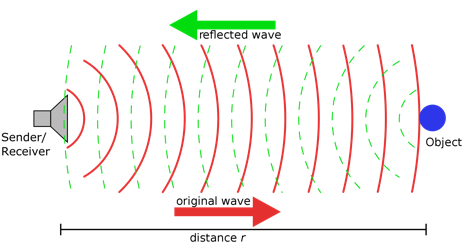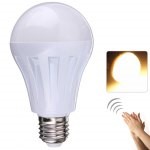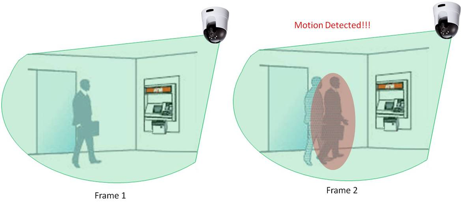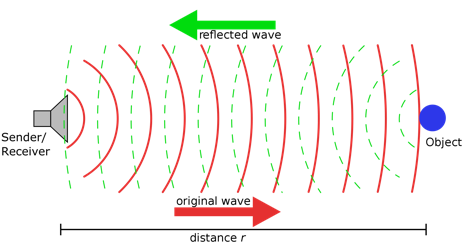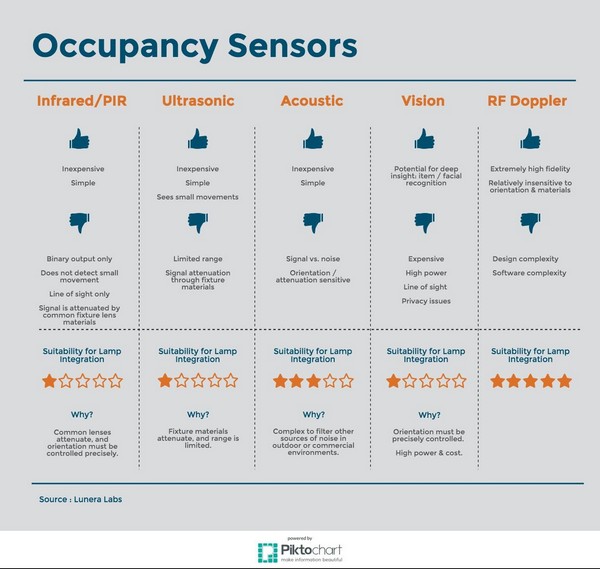Don Barnetson, CTO of Lunera Labs outlines five major lighting control and sensor technologies currently on the market, and compares how each measures up in real-life lighting situations.
Traditional lighting controls have used relatively low-tech sensors and relied on installers and commissioners to place and tune them to meet occupants’ needs. Still the experience of waving your arms in a conference room is the widely spread understanding of lighting controls.
Lunera’s SensAble Technology (ST)
The key technical challenge in Lunera’s SensAble Technology (ST) is to integrate the sensors entirely inside the lamp – in addition to picking up small movement and ignoring false positives; they need to function in a wide range of environments, optical and mechanical settings reliably to provide energy benefits without irritating the occupants.
Presence Sensing
There are five presence-sensing technologies available in the lighting space and two primary ways to process the output from them.
Sensing technologies:
-
InfraRed – typically passive Infrared (PIR)
-
Optics – Vision System
-
Radio – Doppler Sensor
-
Sound – Ultrasonic or Acoustic
-
Vibration – Seismic System
Sensor output types:
-
Binary – a fixed threshold is set. When the sensor output exceeds this threshold, the light turns on and stays on for a programmed time. The sensitivity & timeout of these types of sensors can typically only be tuned with a screwdriver, if at all.
-
Analog – the sensor output is taken into a digital signal processor (DSP), and a software algorithm makes a decision on presence. The benefit here is adaptability – the software can filter out false positives and negatives and adapt to the environment over time with machine learning algorithms.
How PIR Sensors work
 |
|
(All images and photos courtesy of Lunera) |
How Ultrasonic Sensors work
How Acoustic Sensors work
How Vision Sensors work
How Doppler Sensors work
Same as ultrasonic except it is an RF wave rather than an acoustic wave.
Sensor Types
RF Doppler sensors are so sensitive that they can pick up a person’s heartbeat across the room once you process the signal. They are the best choice for presence detection embedded into lamps.
Presence Sensing – Old World vs. New World
The old way is to use a PIR or Ultrasonic sensor with a relay attached; when triggered it turns on for a programmable dwell time. When it turns off during a meeting, you wave your arms to turn it back on. It is a minimal way to achieve code compliance and disliked by occupants.
The new way is to use an analog output coupled with machine learning to adapt the lights to the space in a slow and non-intrusive way that occupants don’t even notice. You get better energy savings compared to the old way, as well as enhanced occupants’ experience.
In future blog posts, we’ll tell you more about different types of sensors and the benefits of integrating them into LED lamps.








